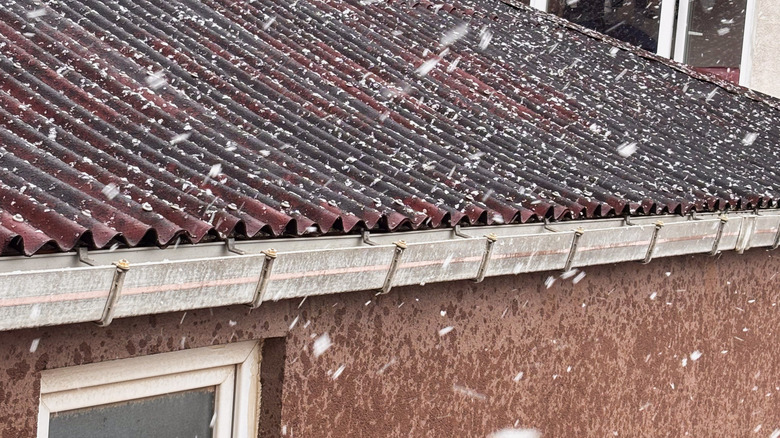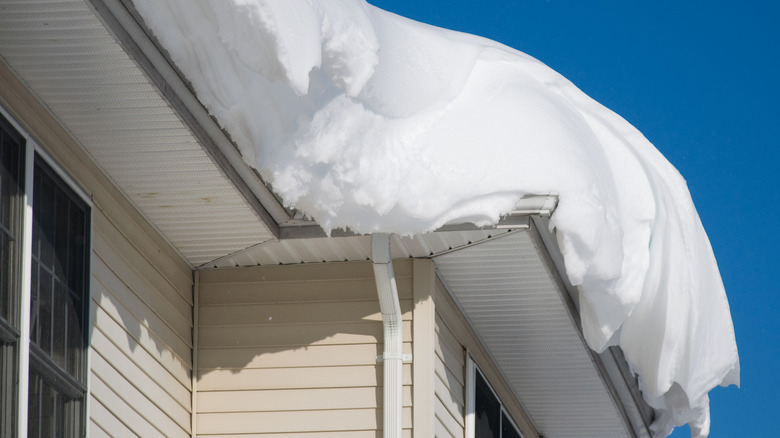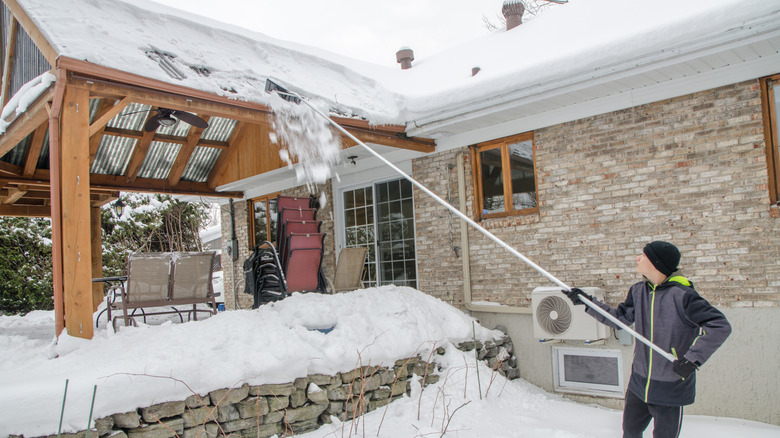How Much Snow Is Too Much For Your Roof To Handle? And How To Prepare
Winter has a way of making everything feel magical. The smell of soup simmering on the stove and the first sip of hot chocolate bring an unmatchable comfort. But not all that glitters is cold and cozy. Beneath that seemingly harmless comfort of winter lies a real problem. Snow sitting on your roof can eventually weigh it down. Generally, a typical roof can handle up to 40 to 45 inches of fresh snow before things start to get risky. Anything beyond that could mean structural stress and potential leaks. Luckily, you can stay ahead of trouble by preparing your home for cold weather. This could mean regularly clearing snow from your roof and properly insulating your attic to prevent ice dams.
When snow doesn't melt between storms, it begins to pile up. Layer after layer compresses into heavy slabs. And soon, that soft powder builds up into hundreds of pounds of weight sitting on your roof. So while you're cozying up with cocoa, it might be worth sparing a thought for what's happening above your head.
There's a limit to how much snow your roof can take before things go wrong
Most roofs, even ones with the best roofing material, can take no more than 40 to 45 inches of fresh snow. It's worth noting that we're talking about fresh snow here — one that looks light enough to blow off with a good gust of wind. Once that snow melts a bit and refreezes, things take a different turn. Compact snow drops your roof's safe limit to somewhere around 17 to 24 inches. And if you're dealing with solid ice, you're looking at 7 to 8 inches before your roof starts feeling the strain.
Why such a huge difference? Well, it all comes down to weight. Fresh snow is primarily frozen fluff. But when it melts and refreezes, it becomes heavy. Consider holding a pillow versus a bucket of water. Same space, wildly different effort. And the real danger comes when it starts stacking up. Say, for example, you've got a foot of compact snow left over from last week's storm, and another 8 inches of new snow lands on top. Now, 18 inches might not look much, but it's heavy nonetheless. And just like that, each new layer can add more weight than your roof was meant to carry.
Tips to protect your roof amidst snowfall
When it comes to snowfall, deal with the problem while it's happening and not when your ceiling starts to groan like an old floorboard. You know what they say, "A stitch in time saves nine," and nowhere is that truer than with your roof. The best thing you can do is grab a roof rake with a long handle and pull off the snow while it's still manageable. Don't aim for spotless. Leave about 2 inches of snow up there to protect your shingles from direct scraping.
Another way to save your roof from a snowy disaster is by insulating your attic. The right insulation keeps warm air from escaping. This, in turn, prevents snow from melting unevenly and refreezing into heavy ice dams. Depending on where you live, you'll want roughly 10 to 14 inches of insulation. Make sure you pay attention to any space where air sneaks through, like chimneys or vents. Seal those spots up tight.
And while you're at it, look outside. Low-hanging branches might look harmless at the moment, but when they're coated in ice, they can wreak havoc on your roof. Trim them back so there's at least 10 feet of clearance from your roof. Finally, if you're unsure about the shape your roof is in, call in a pro for an inspection. It might just save you from expensive mid-winter regrets.


